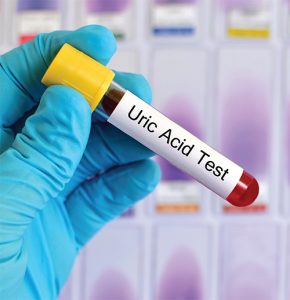
Jarun Ontakrai/shutterstock.com
LONDON—From optimizing responses to methotrexate, to the efficacy of biologics, to the need for imaging in assessing remission, the literature, as ever, has been lively with explorations of pressing topics in the treatment and management of rheumatoid arthritis.
Josef Smolen, MD, chair of rheumatology at the Medical University of Vienna, reviewed many of the highlights from the RA literature over the past year in a presentation at the Annual Congress of the European League Against Rheumatism (EULAR 2016).
Some of his main points:
Optimize Methotrexate Response in RA
Previous studies suggested that the optimal dose is 25 mg per week, but that wasn’t the aim in many recent clinical trials, with some capping doses at 20 mg per week. But some recent trials have reinforced the advantages of trying to reach 25 mg a week.
The C-EARLY trial on certolizumab pegol, for example, found that patients in the methotrexate and placebo arm achieved remission rates of 25% or more, depending on the remission measurement used.1
Efficacy of Biologics
It’s becoming clear that biologics in combination with methotrexate all have similar efficacy.
Comparing data from a series of trials—AIM, GO-FORWARD, OPTION and DANCER—similar responses were seen for abatacept, golimumab, tocilizumab and rituximab in patients with insufficient response to methotrexate. Each of those drugs combined with methotrexate produced an ACR70 response rate in about 20% of those patients.
The randomized, controlled trials of AMPLE (comparing abatacept with adalimumab) and ORBIT (comparing rituximab with anti-TNF therapy) and unpublished data released in a press release for EXXELERATE (comparing certolizumab pegol with adalimumab) validate the similarity in efficacy “beyond any doubt,” Dr. Smolen said.
The Role of JAK Inhibitors
Recent trials, Dr. Smolen said, have seemed to bolster the safety profile of this class of drugs, with long-term extensions of tofacitinib showing an acceptable safety profile similar to the initial periods.
Encouragingly, he said, data for baricitinib in patients who did not respond sufficiently to biologics show similar efficacy no matter the type of biologic agent used, suggesting that the drug can be used effectively across a broad patient population.
And, in RA-BEAM, baricitinib was the first drug to show superiority over a TNF inhibitor in combination with methotrexate.2
Ultrasound
Recent evidence suggests that it’s not necessary to define remission with imaging. The 2016 TaSER trial found no clinical or imaging outcome differences between a group treated with a clinically driven approach and those treated with an ultrasound-driven approach.3


